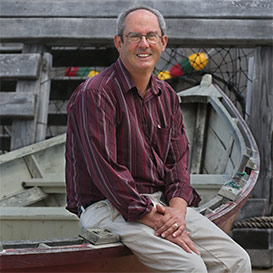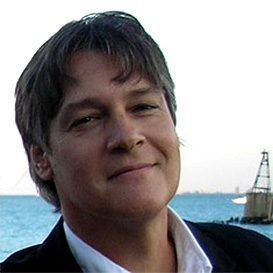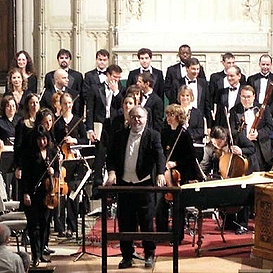Meet the Team of Advisors
Tom Balf

Tom has 25 years of environmental experience with expertise in policy, regulations, stakeholder management, fundraising, and communications.
Tom has been fortunate to be on the cutting edge of a number of significant environmental initiatives during his career. In the eighties, he developed the Household Hazardous Waste Wheel to alert citizens to the dangers of household products and the proper management and disposal of those products. In the nineties, he served as Director of Environmental Affairs for the Aveda Corporation and completed the first publicly available, corporate sustainability report in the United States, as part of the company’s commitments to the CERES Principles. In the first decade of the 21st century, Tom was president of Nexus Environmental Partners, a consulting firm, and was active in the greening of colleges and universities including the development of innovative regulatory models for campuses, and the development of standardized sustainability reporting systems for colleges and universities.
A Cape Ann, Massachusetts native, Tom has more recently looked to his ocean back yard and worked with diverse stakeholders to turn the healthy ocean imperative and the current fisheries challenges into opportunities for engagement, learning and entrepreneurship. He served as Executive Director of Maritime Gloucester, from 2012 – 2017, where public programming, educational outreach and exhibits supported a science-based vision of a sustainable maritime economy in the Gulf of Maine. The expanded use of technology for ocean monitoring and the engagement of citizen scientists are critical elements of this work. In his spare time, he maintains, with his wife, a veterinarian, a poor excuse for a small, working farm in Gloucester.
Mark J. Carlotto

Mark has over thirty years of experience in satellite imaging, pattern recognition, signal/image processing, terrain mapping, and mobile applications. He received a Ph. D. in Electrical Engineering from Carnegie-Mellon University and has over one hundred publications in a number of technical areas. Dr. Carlotto currently works in the defense aerospace industry as a principal investigator developing image processing and machine learning algorithms for automated target recognition (ATR) applications.
Dr. Carlotto’s core strength is his ability to analyze, synthesize, and evaluate “out of the box” solutions to complex interdisciplinary problems. An example is the development and application of computer vision algorithms to search for extraterrestrial artifacts (SETA) on the moon, Mars and in space. His work was recognized by the late Dr. Carl Sagan, one of the leading space scientists of his time.
A more recent example is the creation of a variety of custom apps for the iPhone. His early apps used model-based techniques to detect and track pitch, chord, and key changes in live music. One of them called “Pitch to Note” appeared in an early iPhone commercial on TV. Since then, he has gone on to develop numerous navigation, physical sensing, photo/video, and web apps. Over fifty of his apps are currently available on the Apple App Store.
Complimenting his technical skills is an ability to operate in the field as well as the lab. Dr. Carlotto is currently involved in a number of local historical, archaeological, and other scientific investigations. He has written several books on the history and archaeology of the island woods of Cape Ann, and is co-author of a recent archaeoastronomy paper about a possible Native American ceremonial site on Poles Hill in Gloucester. His latest project involves the development and deployment of small underwater data collection devices known as AquiPods for marine research.
Todd Rodgers

Todd has 35+ years of hands-on, down and dirty engineering experience with a career focus on 3D computer graphics (chip design, hardware, algorithms, large-dataset visualization, and graphics production) and Internet-based technology development. While he’s held many senior management roles (at VP or CTO level), he has always enjoyed the tinkering, prototyping and problem solving that results in discovery or new product development.
Todd has worked at IBM’s Watson Research Center (Research Staff Member, 5 years), The Analytic Sciences Corporation (TASC, 7 years), was CTO at Peregrine Publishers (acquired by Pearson Education), Pearson Education, Voter.com, BiddingForGood.com, and VP of Engineering at Delphi Internet and Avenue100 Media (a Washington Post Company). Now in a consulting role (Principal, Rodgers Research Group, LLC), he has stepped in to help a half a dozen Boston-area start-ups to surmount technical and organizational challenges.
Todd is an avid sailor (35+ foot mono-hulls), an FCC licensed, Extra Class, Amateur Radio (“Ham Radio”) operator and recently learned to use production-grade machine shop tools (vertical milling machines, CNC and lathes). He continues to tinker with electronics, radio communications and computing, using the Raspberry Pi, and Arduino platforms, Unix-based cloud-computing resources (AWS), digital radio communications (HF packet, XBee, and Internet-based communications technologies) to have fun and learn.
Tom Stephenson

Tom has developed solutions for a highly diverse range of problems across multiple disciplines for over 40 years. At the Harvard/Smithsonian Center for Astrophysics (CfA), he developed a computer-based system to collect and process red-shift data for tens of thousands of galaxies leading to the first 3-D map of galaxies. He also developed the control system for the first multiple mirror telescope located at Mt. Hopkins using Forth, a compact threaded language originally developed for astronomy applications.
While at TASC, he led the group that created the first high resolution 3-D maps and animations using high resolution satellite imagery and terrain elevation data processed on Pixar Image Computer (the same ones used by George Lucas to produce Star Wars). Clients included ABC News, ABC Sports (Calgary Olympics) and National Geographic (Yellowstone fires).
With the MIT Media Lab he developed a novel fractal-based method for compressing and enhancing digital images (US patent 5148497 A) by adding image detail consistent with the local fractal dimension. A variant of this approach is used for upsampling images in 4K televisions. And while at ALPHATECH/BAE, he led the development of a probabilistic query engine for managing uncertainty inherent in intelligence data.
Tom is a professional bassoonist and world-class recording engineer with state of the art studios in Boston and Gloucester. He has developed a number of audio signal processing techniques to increase S/N and to increase spatial detail in compromised recordings. His recording of Lorraine Hunt, “Lorraine at Emmanuel” made it to No. 2 on the classical billboard charts. Several hundred of his recordings are available at: gardnermuseum.org.
Glen Speckert

Glen Speckert is an MIT alumni who started helping computers to “see” at the AI Vision Lab. He has 25 years of experience in the architecture, design, development, and integration of imaging systems hardware, software, media archive/management systems, and emerging standards.
Glen explored distributed control systems and diagnostics for large physics machines at LLNL, including magnetic mirror fusion experiment, particle beam accelerators, and high power tunable lasers for uranium and plutonium isotope separation. He especially liked the 5 nsec imaging system for the 10kA e-beam.
Glen moved to Pixar to lead the software team for the Pixar Image Computer’s largest integration aimed at real time roam, zoom, and sharpen of large satellite images. Pixar’s delivered prototypes were years ahead of all commercial imaging workstations, although the government declined to purchase in volume. Pixar then sold the image computer, to focus on rendering, and Glen moved to TASC in Boston.
As a TASC SI (Systems Integrator), Glen helped the government establish standards and architectures for imagery exploitation systems. Glen provided systems engineering as part of several great teams that pushed the state of the art in high end government imaging archive, communication, and exploitation; transitioning the user community from light tables with film to digital imaging workstations. Glen’s contributions to the production segment, primed by Lockheed, were central to the architecture of the deployed solution (USIGS – United States Imagery and Geospatial Systems).
Glen was later the architect of NGA’s GeoScout prototype called Concept Car, which disrupted the USIGS architecture with a server based geospatial framework, using Google Earth Enterprise and later ESRI. Glen was the systems engineering lead for the roll-out of Geospatial Services to the intelligence community. He then joined Google Enterprise as their federal systems architect.
Glen’s company, SpeckTech Inc. received a Navy SBIR for Innovative Imagery Processing Architecture, which has evolved into their StreamWeaving product. StreamWeaving is an architecture for imagery and video processing in a geospatial framework.
Glen is active in the MIT Enterprise Forum’s Stanford Venture Lab (VLAB.org), previously as chair of the Drones event committee, and currently as the upcoming Swarms event chair.
Glen is still looking to build systems that “see”. Still hungry, still foolish.

